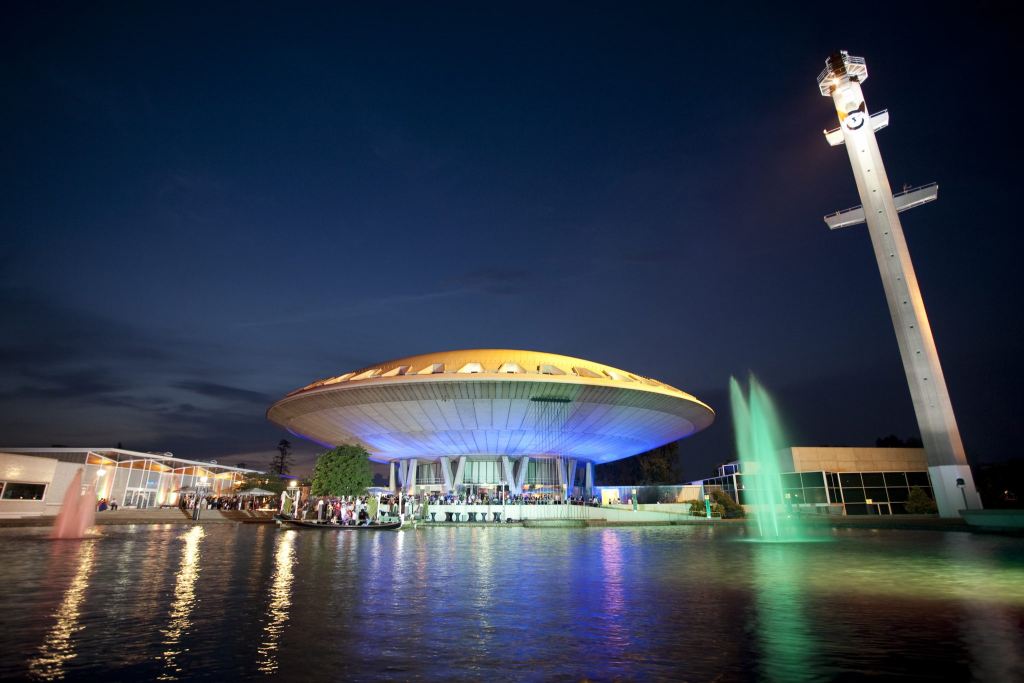
It only seems such a short time ago: the first time I visited the Evoluon. I was about ten years old, together with my parents, my sister and brothers. In the hall was a very tall robot with three microphones on his head. When you clapped your hands or made another sound, it moved towards you. Very exciting. I also remember there was a loudspeaker in a flat plate, which then moved backwards and forward again, so you could hear the difference in sound. And all those other exciting things, with flashing lights and moving things. On all the floors of that futuristic building.
Looking back, I think that the Evoluon has strongly influenced my interest in electrical engineering, speaker construction, and the working of TVs. My father mainly gave me the mechanical side: on Sundays, we were often busy building beautiful things with wooden Meccano and later with the metal version. My mother taught me the fun of crafts (and the love of mathematics!). But after my visits to the Evoluon, I was motivated to buy the Philips construction boxes (EE1003/4). I then built a telephone eavesdropper that made the telephone in our living room audible to everyone with a coil. I thought that was so cool!
Yet, I later went to study mechanical engineering and not electrical engineering. In the end, I found moving things more tangible and fun. In my work at Philips, I became a mechatronics researcher, and at the university, my work on high tech systems really is the combination of those disciplines.
And again I come across the Evoluon. It has been a conference centre for years and the iconic role is still there: because of the shape of the building, but not because of its content. It is for sale now. How cool would it be to make it a ‘living’ building again? A centre for human-machine experience, to really feel how we will be able to deal with technology in the future. With robots that help us and that comfort us. A place where children can experience how much fun technology is, and where elderly and care professionals can be trained in handling technology.
I see it all in my head, in our vibrant region, where the Eindhoven Engine has been given the green light to show everyone that accelerating innovation is possible if you really work together, and where ASML has just announced that it expects to be bigger than Philips in the coming years. For me, it is all symbolized by that iconic building, where I discovered Eindhoven as a child. It seems like it’s been a while!
About this column:
In a weekly column, alternately written by Maarten Steinbuch, Mary Fiers, Carlo van de Weijer, Lucien Engelen, Tessie Hartjes and Auke Hoekstra, Innovation Origins tries to find out what the future will look like. The six columnists, occasionally supplemented with guest bloggers, are all working in their own way on solutions for the problems of our time. So that Tomorrow will be Good. Here all previous episodes.
